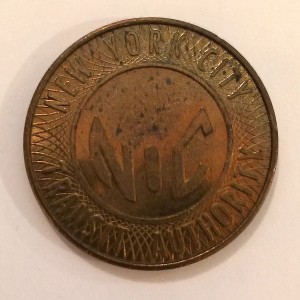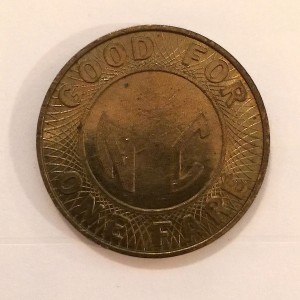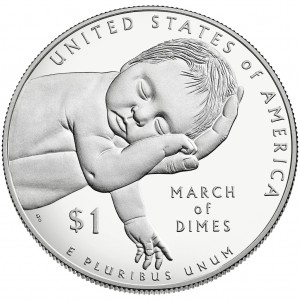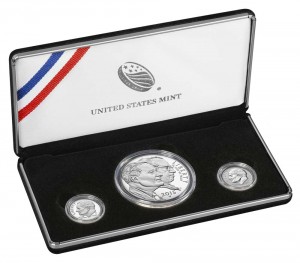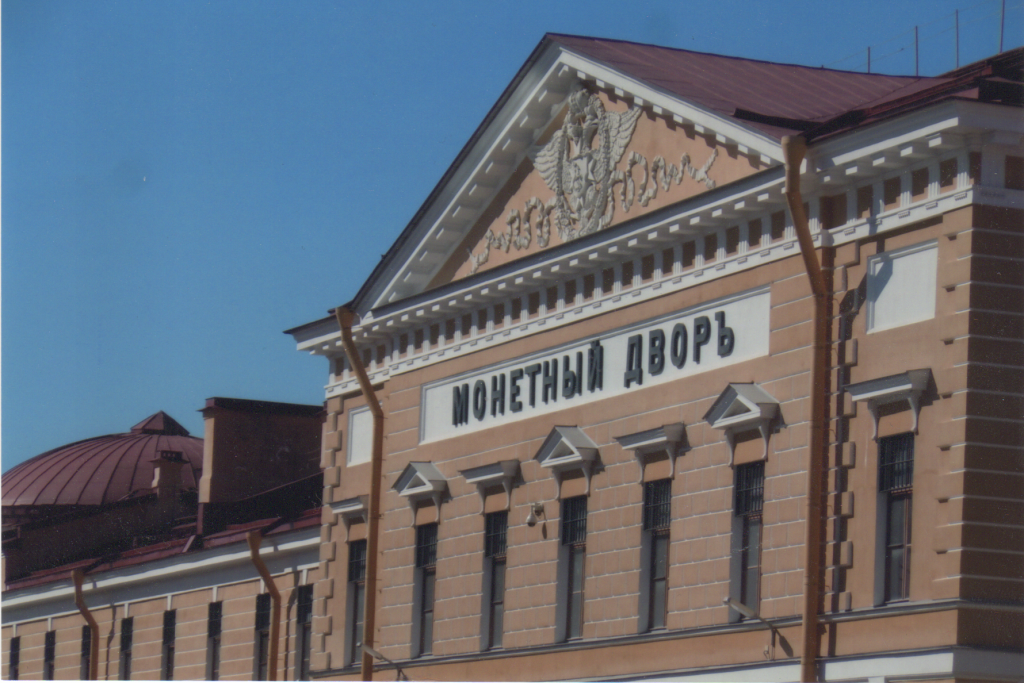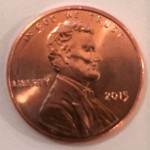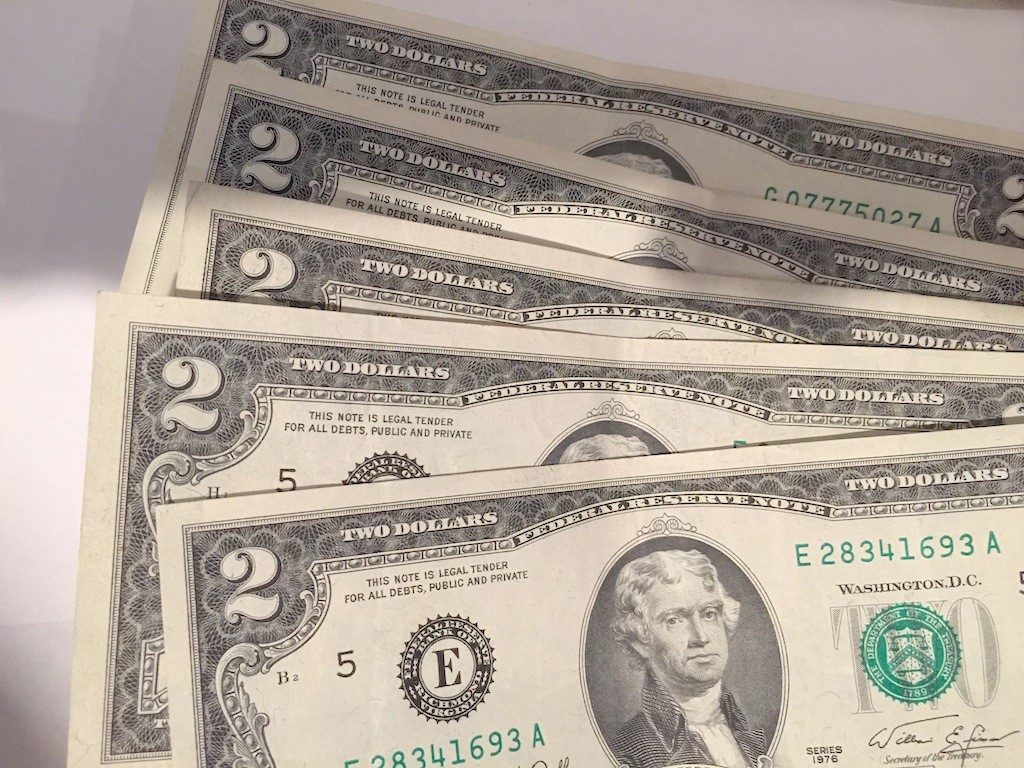Weekly World Numismatic News for February 14, 2021
One of the nice aspects of a new year is all of the new coins that become available. Every major mint starts the year with new bullion products, commemorative coins, and other non-circulated legal tender coinage to keep collectors interested.
For collectors, it is a lot of fun.
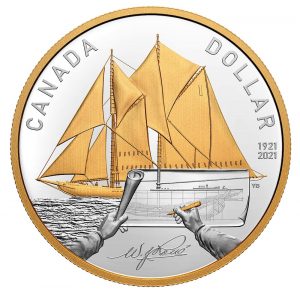
Bluenose gold-plated silver dollar is part of the Royal Canadian Mint Silver Proof Set (Image courtesy of the Royal Canadian Mint)
Although the Bluenose launched in 1921, it did not appear on the Canada 10-cent coin until 1937. Since then, the Bluenose appeared on every 10-cent coin except for 1967 when Canadian coins were redesigned to commemorate the 100th anniversary of the Canadian Confederation.
The Royal Mint has started the year by issuing commemorative sovereigns, Britannia bullion coins, and the yearly Trial of the Pyx. Although modern technology makes the Trial of the Pyx unnecessary, it is an exciting part of Royal Mint history that deserves celebration.
Down under in Australia, the Royal Australian Mint has issued silver coins of the Outback Majesty series that celebrates the Australian Outback animals. Since Australia has done better than the rest of the world with keeping the pandemic under control, the Royal Australian Mint has resumed tours and has operations closer to normal.
Over in New Zealand, it looks like they are having more fun with coins. New this year are the Chibi Collection of the Lord of the Rings characters, DC Comics superheroes, and more. Although the New Zealand Mint designs and strikes these coins, they are issued under the Niue government’s authority. The New Zealand Mint also strikes coins for the Cook Islands. Both are self-governing states in free association with New Zealand.
The U.S. Mint, whose output is the most restrictive of the world mints, has issued the American Silver Eagle Proof coin and the new American Platinum Eagle Proof. The American Platinum Eagle Proof series celebrates the First Amendment to the United States Constitution, starting with the Freedom of Religion. Also available is the Christa McAuliffe Commemorative Silver Dollar. Later, the U.S. Mint will issue the National Law Enforcement Memorial and Museum commemorative coins.
Finally, the U.S. Mint has issued the last of the America the Beautiful Quarters honoring the Tuskegee Airman Historical Site. The U.S. Mint will produce a redesigned quarter for the balance of the year. The Prominent American Women Quarters will begin in 2022.
It is a fun time to be a coin collector!
And now the news…
 → Read more at bloomberg.com
→ Read more at bloomberg.com
 → Read more at timesofisrael.com
→ Read more at timesofisrael.com
 → Read more at cnn.com
→ Read more at cnn.com
 → Read more at ladbible.com
→ Read more at ladbible.com
 → Read more at arabnews.com
→ Read more at arabnews.com
 → Read more at edp24.co.uk
→ Read more at edp24.co.uk
It’s Balmer, hon!
 As it does three times per year, Whitman rolls into the Baltimore Convention Center for the Whitman Baltimore Expo. This time, rather than the showing being in Halls A and B it was held in E and F. The new location within the building was not as intuitive to find as walking to the end and Whitman did not do as good of a job as they could have in placing their signs. But for general access, which is was off of South Sharp Street, it provided a little better access than off of West Pratt Street, which is a main artery as it passes in front of the Inner Harbor.
As it does three times per year, Whitman rolls into the Baltimore Convention Center for the Whitman Baltimore Expo. This time, rather than the showing being in Halls A and B it was held in E and F. The new location within the building was not as intuitive to find as walking to the end and Whitman did not do as good of a job as they could have in placing their signs. But for general access, which is was off of South Sharp Street, it provided a little better access than off of West Pratt Street, which is a main artery as it passes in front of the Inner Harbor.
Although there were the same number of booths, the space felt smaller. Lights were brighter since these halls seem to have been converted to using LED lighting—the brighter space made the convention center seem less cavernous. Aisles were not as wide and some of the layout changed, but it seemed to have the same number of dealers. Some of the dealers who had larger spaces did downsize and the one vendor of supplies that is not Whitman did not set up at the show. It is not known if they decided not to attend or were not invited to attend. Since Whitman does not carry all books and supplies, it would be nice if they had another supplier.
On thing I have noticed is that since the death of numismatic book dealer John Burns in early 2014 there seems to be fewer numismatic book offerings at some of the east coast shows. Aside from missing his sharp wit, I was always able to find something a little off-beat or out of the ordinary amongst the books he had for sale. While there was a book dealer at this show, the items were more toward what I would consider ordinary. I hope someone steps in with some interesting items.
As I walked the floor and spoke to many of the dealers (late Friday afternoon), they all said that they were doing well. With the area still a bit chilly and no sports to take over the downtown Baltimore area (home opener for the Baltimore Orioles is on Friday, April 10), visitors to downtown Baltimore had plenty of time to visit. For those of us who like access to a major coin show, it is good to hear. If the dealers are doing well then they will keep coming back. If the dealers come back, the show goes on.
Both the U.S. Mint and Bureau of Engraving and Printing had booths at the show. While the U.S. Mint was showing current products, the Bureau of Engraving and Printing had some historical information. Although it is good to see the U.S. Mint at the show, it might be nice to see some historical artifacts. Since most of the U.S. Mint’s collection was given to the Smithsonian Institute, maybe they can be convinced to bring an exhibit to the show. Having the Smithsonian there would be very different than other shows since they have a different type of collection than the American Numismatic Association, for example.
The U.S. Mint was showing off the March of Dimes Commemorative set that will go on sale later this year. The set features a proof 2015 March of Dimes Commemorative dollar, a proof Roosevelt dime from San Francisco, and a reverse proof Roosevelt time from Philadelphia. The reverse proof dime is beautiful. It seems that the reverse proofs are really attractive coins. Seeing this set only enforces my desire to buy it when it becomes available.Another interesting find was the First Edition of the Red Book Deluxe Edition. While flipping through it at the show, it looks like the Red Book on steroids. There is more information, more detail on pricing, and some other features. A first impression is that it extends the Red Book franchise a bit beyond what they called their Professional Edition. While there is a lot of information, my first impression is that I wish it was more of a cross between the Professional Edition and the Coin World Almanac. Both books have their places, but to combine the pricing and information that is updated yearly (the Coin World Almanac is updated every 10 years) would be a great resource. Hopefully, I will get my hands on one to review.
Finally, no show would be complete with out my one cool find. After walking the floor for a few hours I finally stat at the table of Cunningham Exonumia and had a nice chat with Paul Cunningham while searching for something New York. While I have not given up coins or Maryland Colonial Currency, I seem to be having more fun trying to find tokens and other exonumia from New York City and my hometown of Brooklyn. I have seen Paul at many other shows and have purchased from him. He always has a great selection. For me, I may have exhausted some of his inventory. This time, the pieces he was offering this weekend I already have in my collection.
But it did not stop me from looking. Tokens are very interesting. They are alternatives to money and are more tied to the culture of the community than money. For me, a New York Subway token not only represented a ride on the subway, but it also represents a different part of my life. It makes collecting very person. Although I have a collection of subway tokens I continue to look because you never know what you can find—especially an error.
What I found was a large token with an error. It was sold as the “Large Y” token where the “Y” was supposed to be cutout. Those tokens were used from 1970-1978 and two fare increases starting out at 30-cents in 1970, 35-cents in 1972, then 50-cents in 1975. But what I found is not that token. After examine the token carefully and some others I have, this is an error to the “Solid Brass NYC” Token. Introduced with the 60-cent fare in 1980, the “Y” was part of the raised design and not cutout. The clue as came when examine the obverse (the side that says “New York City Transit Authroity”). Between the “N” and the “C” is the tail of the “Y” but without its top. That tail would not have existed on the earlier tokens because they would have been cut out. Instead, the is a die issue where only the tail of the “Y” on one side was struck.
It might not be the error I expected, but it is an error nonetheless! It also does not make it any less fun or valuable because it will fit nicely in my collection.
If you were not able to make it Baltimore, here are some of the pictures I had taken at the show:
New bullion benchmark begins new era
The move to an electronic system followed the revelation that in June 2012 an employee of Barclays Bank manipulated the gold fixing process. Unfortunately, it was not an isolated incident. When Barclays was investigated, it was revealed that there were such system and control failures that members of the bank had been manipulating gold prices since they started hosting the market. In May 2014, the Financial Control Authority, the British equivalent Commodity Futures Trading Commission, fined Barclays £26 million for not properly managing the market.
What made the old system susceptible to manipulation was that it was still widely a human controlled process with bidding arbitrarily controlled behind then scenes. Even as the market moved toward a more technological approach, it was as if the technology was being used as the proxy with a human still doing the arbitration. Think of it as if the computers would provide the bidding but there was still an human auctioneer managing the bids.
The new market is electronically run and monitored in cooperation with the LBMA. Rather than a single source being responsible for all of the benchmark prices, the LBMA Gold price auctions are held twice daily by the ICE Benchmark Administration (IBA) at 10:30 AM and 3:00 PM London time in U.S. dollars. IBA is an independent subsidiary of the Intercontinental Exchange (ICE) responsible for the end-to-end administration of benchmark prices. They do not buy or sell commodities but manage the transactions and setting rates based on market forces.
To further diversify the market, the LBMA Silver price auction is operated by the CME Group, a Chicago-based market maker, and administered by Thompson Reuters. The London Metals Exchange administers the platinum and palladium price market. Silver auctions are held once per day at noon London time.
Proponents of the new market system touts its stronger oversight and detailed audit trail capabilities to support the new regulations as making this market more trustworthy than the previous system. Detractors wonder if the new electronic system could create market inequities that was seen in U.S. markets with programmed trading.
News reports suggest that the new market operated without problems on its opening day. In fact, the market saw a rise in all metals by the afternoon auction.
Since the U.S. Mint sets its price based on the London market, they sent the following note to Authorized Purchases of bullion products on March 18, 2015:
This is to inform you that on Friday, March 20, 2015 the U.S. Mint will start using the LBMA Gold Price (PM) to price and settle all of its gold bullion coin orders. The new gold price replaces the London Gold Fix and will be managed by the ICE Benchmark Administration (IBA). We do not anticipate any transition issues. Moving forward all gold bullion transactions with the United States Mint will utilize the new LBMA Gold Price (PM) in place of the (PM) London Gold Fix.
While the move will make the markets more transparent and possibly open it to more participants, it is uncertain how this will affect the price of metals in the long term. For that, my crystal ball does not compute!
London gold price snapshot courtesy of Kitco.
March of Dimes commemorative should be a COTY candidate
Founded as the National Foundation for Infantile Paralysis by President Franklin D. Roosevelt on January 3, 1938 as a response to the polio epidemic, the group brought together volunteers and scientists to eradicate polio. Basil O’Connor, an attorney and friend to Roosevelt, helped establish the organization and served as its first president. His first task was to organize the volunteers and raise money to support research.
The breakthrough in eradicating polio came in 1952 when Dr. Jonas Salk announced that his team developed a vaccination. Following a trial that involved 1.8 million children in 1954, the Salk vaccine was deemed safe and effective. In 1955 the vaccine was approved for wide use.
Even though the vaccine would save lives, there was a problem with children who were not being as cooperative as they should be. Everyone knew that the vaccine would benefit everyone, but parents did find it difficult to deal with screaming children. This is where Dr. Albert Sabin stepped in to lead an effort to find an oral vaccine. The result was a liquid that would be poured on a sugar cube and eaten by the child. This version of the vaccine required two doses a year apart, but very few children complained—at least amongst my contemporaries.
The name “March of Dimes” was coined by Eddie Cantor who was inspired to support a nationwide fundraising campaign the week preceding President Roosevelt’s birthday on January 29, 1938. One of the fundraisers was the selling of lapel pins that sold for 10-cents each. Others would donate 10-cents out of proceeds to the fundraiser. When the fundraisers ended, the organizers counted $85,000 in 10-cent donations. Since then, their annual fundraising efforts were called the March of Dimes.
Following the success of the polio vaccination the organization changed its mission to bring awareness and support research to prevent birth defects. After years of supporting the March of Dimes campaign, in 1976 the organization changed its name to March of Dimes Birth Defects Foundation. In 2007 the name was shortened to the March of Dimes Foundation.
The obverse of the commemorative dollar honors the impact of President Franklin D. Roosevelt and Dr. Jonas Salk on the March of Dimes.
But the March of Dimes is and always has been about infant health. Working to promote healthy pregnancies and preventing pre-mature births, there is nothing that is more important to their mission but the birth of a healthy child. What better to represent the care of a healthy infant than the image of the reverse of this commemorative coin. Designed and engraved by Don Everhart, the reverse shows a sleeping infant cuddled in its parent’s hand. It is a simple yet powerful image that is very compelling.
Although I am not a commemorative coin collector, the image is very powerful. And since $10 will be going to the March of Dimes, I will buy one, but as part of the 2015 March of Dimes Special Set. This set will feature a proof 2015 March of Dimes Commemorative dollar, a proof Roosevelt dime from San Francisco, and a reverse proof Roosevelt time from Philadelphia. Being more of a fan of the reverse roof and the commemorative than the president, I can justify the purchase as a collectible. When I do order and receive the set, I will be storing it with the reverse of the March of Dimes dollar facing up.
One picture leads to an interesting look at a Mint’s history
Have you ever started looking for something only to find other items that are more interesting that what you were looking for?
Today’s find in the “To Do” pile is a picture of front of the Saint Petersburg Mint (translated here) taken by my father during his trip to Russia last year. The sign on front facade “моне́тный двор” translates to “Mint.”
The Saint Petersburg Mint is the oldest mint in Russia. Founded by Peter the Great in 1724, it was the primary producer of coins and currency up until the formation of the Russian Federation and adoption of their current constitution in 1993. The main mint facility is now located in Moscow.
Peter the Great founded Saint Petersburg in 1703 and made it the imperial capital of the Russian empire. Wanting it the to be the most modern city in the world, Peter was proactive in making sure that innovations in infrastructure and cultural life would be available for everyone in the capital. His efforts were fought by the nobility who thought they would lose their power if the government gave more to the people. Peter died in February 1725 from a massive internal infection without realizing many of his dreams for the city.
Following Peter I’s death, Peter’s second wife Catherine I and grandson Peter II, were crowed as tsar of the Russian empire. In 1738, following Catherine’s death in 1737, Peter moved the capital to Moscow but leaving many of the infrastructure behind. Peter II died in 1730 and was succeed by Anna, who was the daughter of Ivan V and niece of Peter I. Anna had been raised with full royal flourishes and chose to move the capital back to Saint Petersburg in 1732 and continue Peter’s westernization efforts for her own pleasure.
The era following Peter I saw the decline of the Russian empire including the degradation of Saint Petersburg as one of the world’s most cosmopolitan city. It wasn’t until the age of Russian Enlightenment under Catherine the Great when there would be improvements in Russian society and the great Mint.
The Russian Enlightenment was the inspiration for Charles Gascoigne to abandon his career as a lead engineer in the steel mills of Edinburg, Scotland and move to Saint Petersburg in 1786. In Saint Petersburg, Gascoigne de a name for himself as an engineer, inventor, and successful businessman. One of his specialties was to take failing businesses and use his engineering skills to modernize their production. One of the businesses Gascoigne turned around was a button foundry whose owner submitted medals made by the machinery to Catherine in order to win a contract to produce more.
Catherine died in 1796 and her son, Paul I was coronated as emperor. Paul was impressed with the details created by the machinery that he was more interested in hiring Gascoigne to update the old minting equipment. Gascoigne first sent engineers to perform the tasks but later took over the projects himself when it was discovered that the machinery being used was in severe disrepair. In 1798 he was assigned the task of determining what it will take to rehabilitate the old Mont.
When Gascoigne did his assessment, he found the entire facility in such disrepair that he proposed a full refurbishing of the facility including buying new machines to coin money. Gascoigne’s plan was to clear everything out of the building and rebuild the floors and walls leaving the outside alone. This included purchasing new equipment and creating new facilities to store and process metals. His plan also included ways to refortify the building that had be subject to thefts. In 1799, Paul issued an imperial degree to allow Gascoigne to execute his plan.
Unfortunately, Gascoigne was caught over charging the Russian bank for materials and was briefly arrested in late 1799. Claiming it was a misunderstanding, a Russian court fined him the amount allegedly overcharged and was allowed to return to the Mint to finish the work.
Gascoigne handed over the management of the mint to the Banking Yard Mint Office Department so that he could concentrate on finishing the reconstruction. Work was finally completed in October 1805 and was handed over the Assignation Bank, who occupied the Mint building. Founded by Catherine the Great, the Assignation Bank was the manager of the money supply in imperial Russia.
The Saint Petersburg Mint survived changes in bank rules in 1843 when the Assignation Bank was dissolved as part of financial reform and the Assignation ruble was recalled and replaced with state credit notes issued by the newly created State Bank. It continued to be the primary producer of coins following the Russian Revolution of 1917 when all of the paper note production was moved out of Saint Petersburg (renamed Leningrad) primarily to Moscow.
Starting in 1961, the Leningrad Mint began to strike commemorative and bullion coins for public sale, primarily to foreign collectors and investors. Although it was the primary mint for creating medals during the existence of the Soviet Union, much of the circulating production was being moved to other facilities within the country. As part of the economic reforms that ended communist rule and formed the Russian Federation, all production of circulating coins were moved to other facilities leaving the Leningrad Mint the country’s producer of medals and collector coins.
As part of the reformation, government offices were consolidated in the capital city of Moscow removing the Mint’s standing as the country’s primary facility. The Leningrad Mint, became a subsidiary facility as part of this reorganization. And with the vote by city residents to rename the city in 1991, it was renamed the Saint Petersburg Mint.
A first 2015 find
In the past few years I have had to wait until late April or May to find a coin with the current year’s date in pocket change. This year, it took a trip to New York to find a 2015 coin earlier than in the past.
After dropping off my dogs at the house of the person who babysits them, my wife and found our way to I-95 then north to the city of my birth. Since I am a coffee hound, I have to stop in order to take care of the after effects of drinking the coffee and buy more, of course. This time, we stopped at the Chesapeake House Travel Plaza on I-95 in Cecil County, Maryland.
First, we were stunned by the new building. the state demolished the old Chesapeake House and rebuilt a new building complete with LEED Silver Certification and a better choice of side-of-the-road restaurants than the usual. One of those establishments was Peet’s Coffee and Tea where I was able to fuel myself before fueling my vehicle.
As part of my change I received a shiny, new 2015 Lincoln cent!
Not only did a get a good cup of coffee but I was treated to my first 2015 find of the year. It was a good way to start a weekend that included a family celebration!
Did you find a 2015 coin in your pocket change?
Total Voters: 24


